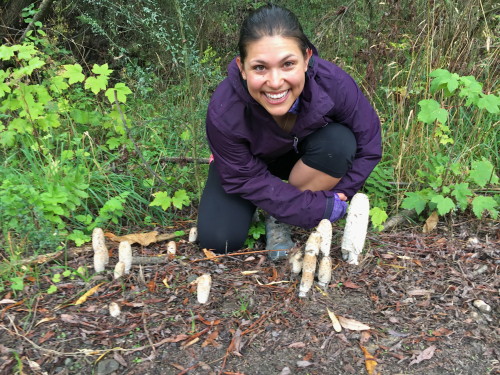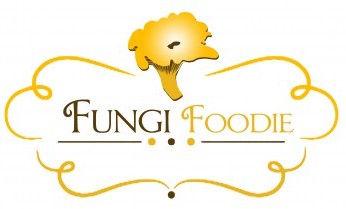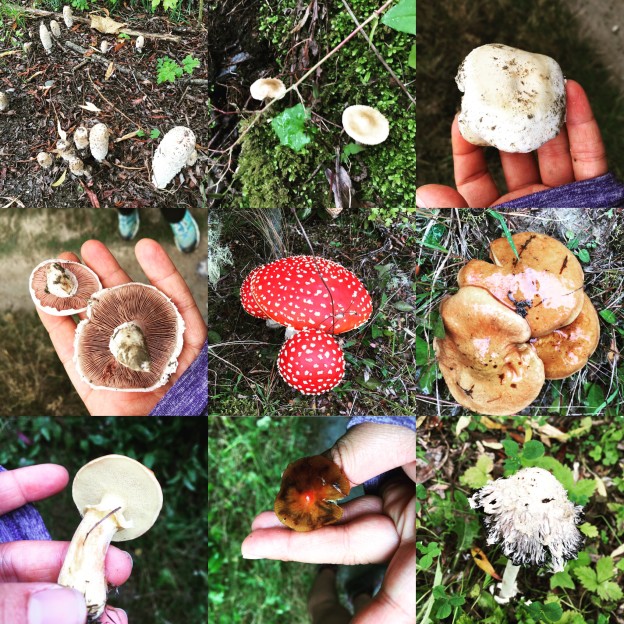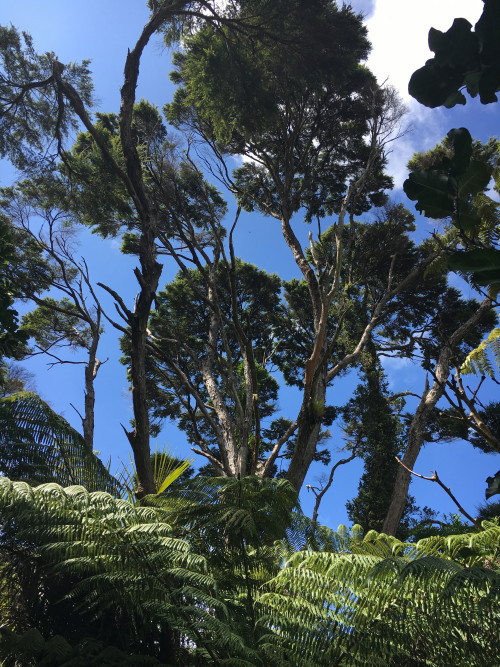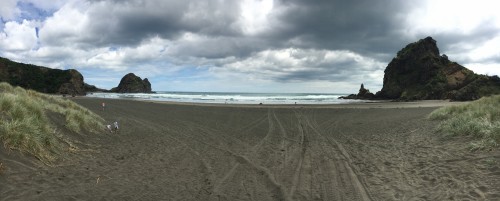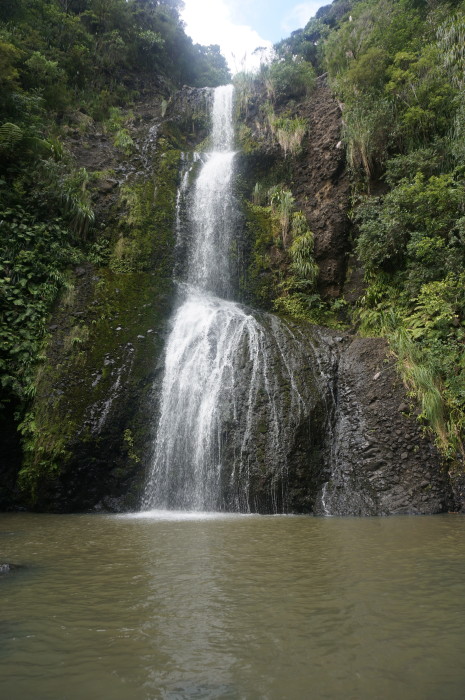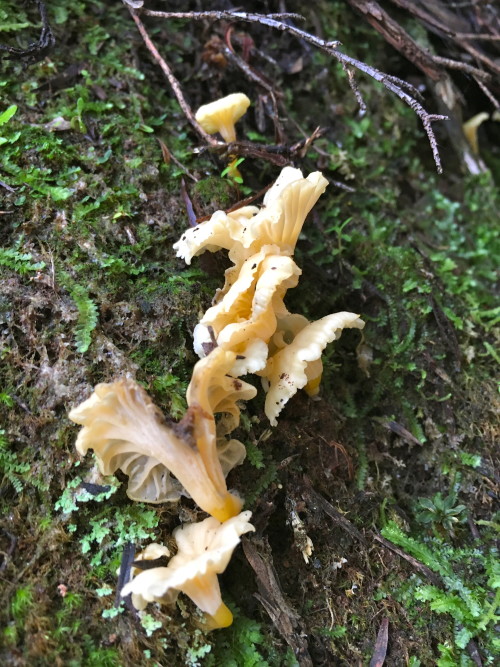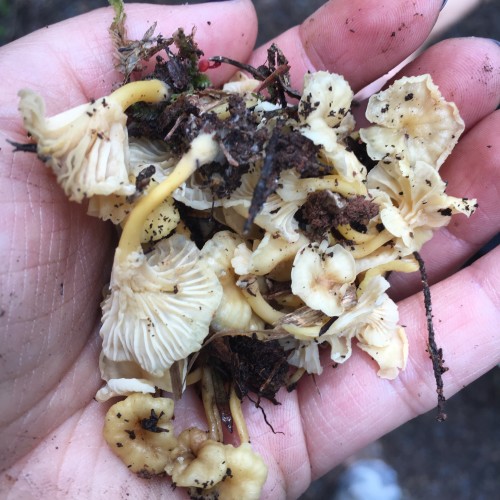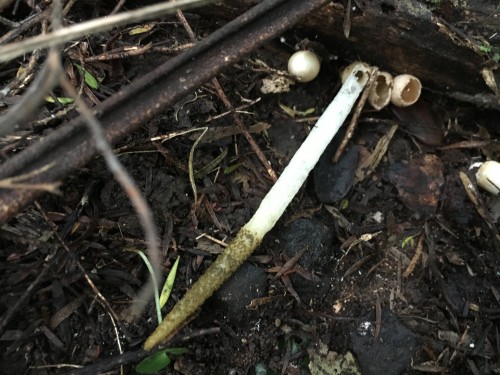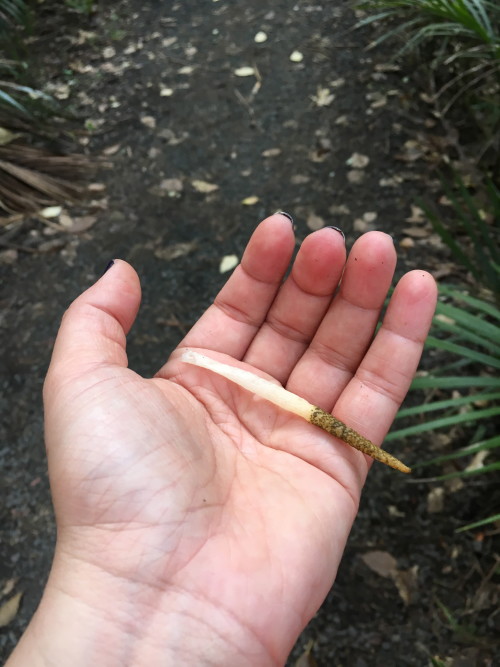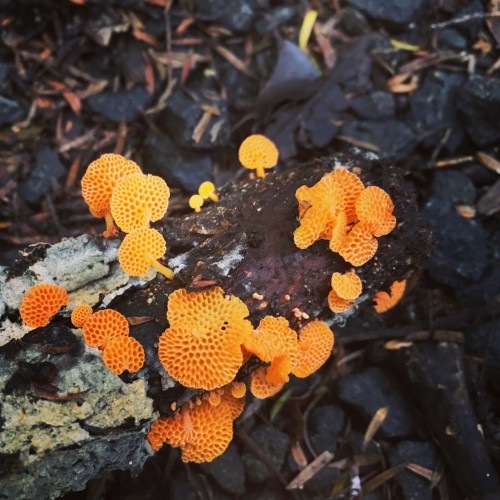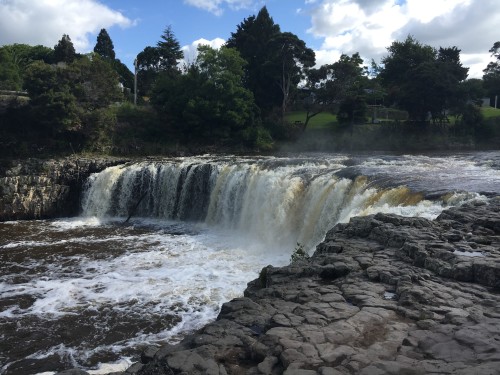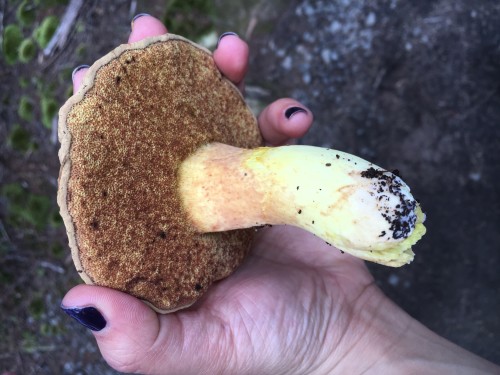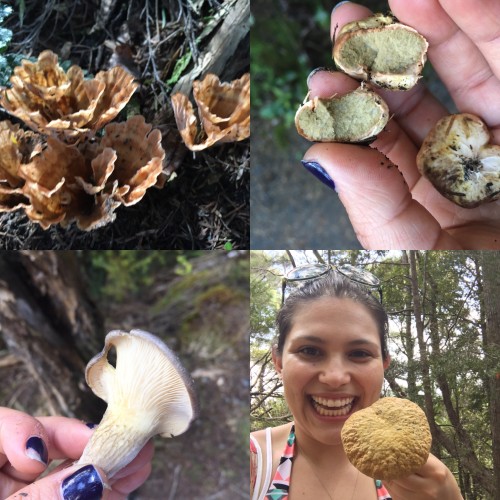Thanks for your enthusiasm about my southern hemisphere posts! My last post was about New Zealand north island mushrooms, but now we are going to embark onto the south island! As some of you may know, my PhD speciality is on fungi symbiotically associated with pine tree roots. Introduced pine trees make up a big proportion of New Zealand forests, and foresters were not able to get the pine trees to grow until they co-introduced the obligately mutualistic fungi along with the trees. Thus, much to my surprise, I recognized a lot of the mushrooms that I saw in NZ because they were northern hemisphere mushrooms that were co-introduced along with the pine trees. So you might start to see some photos that look awfully similar to my California mushroom hunting in Point Reyes National Seashore.
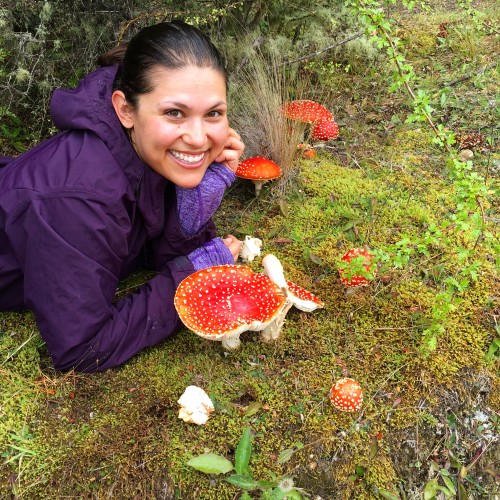
Posing with some beautiful Amanita muscarias. Am I in California or am I in New Zealand?
Amanita muscaria is probably the most recognizable mushroom species of all time. It is the fly agaric, or as my Swedish friends taught me, flugsvamp, recognizable from Mario Brothers, Alice in Wanderland, or the amazing manicure I got for the Ecology of Soil Microorganisms conference in Prague. It is a very photogenic mushroom and I had a lot of fun posing with it as I happened upon them in a hike in Arrowtown near Queenstown, New Zealand.
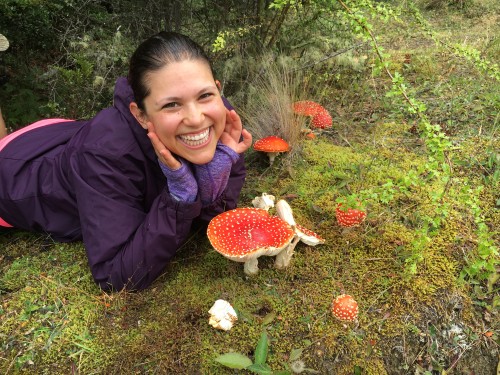
Having fun posing with these beautiful Amanita muscaria
Amanita muscaria is interesting because it is very invasive in the southern hemisphere and grows in huge abundances like I have never seen in the northern hemisphere. It would be really interesting to study its invasion ecology! But that’s a little too esoteric for this blog…for now I will just mention that they get really really big in the southern hemisphere, and they are everywhere, but don’t let their beauty trick you into eating them. They may look very appealing, but without proper detoxification they will make you really ill.
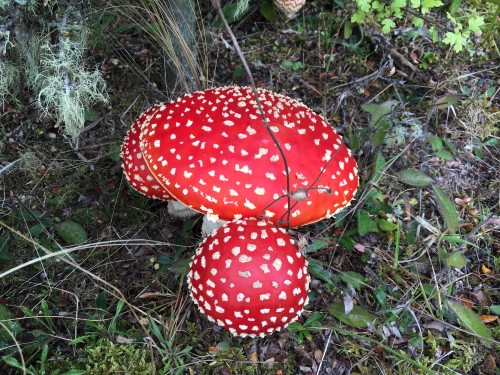
Big, beautiful New Zealand Amanita muscaria
The most fun part about mushroom hunting in New Zealand was watching my new traveler friends that I met from across the globe get psyched about mushrooms. Check out my Dutch friend Julia taking pictures of mushrooms. I got everyone into the mushroom fever!

My Dutch friend Julia can’t help but get sucked in to the mushroom fever!
My Spanish friend Claudia, who I met while traveling in Peru, moved to New Zealand several months ago. She now lives in Queenstown, and when I got there she took me and Julia on this amazing hike called the Sawpit Gully Loop in a cute little town near Queenstown called Arrowtown. It truly is a small world, after all!
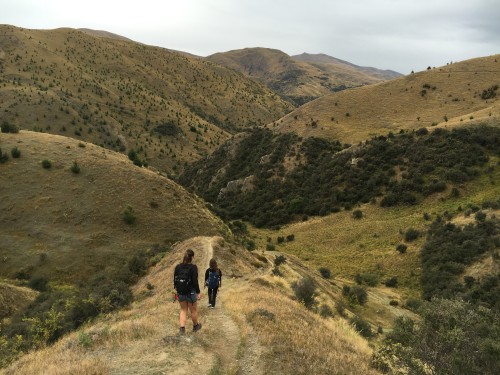
Julia and Claudia hiking the Sawpit Gully Loop in Arrowtown
It had been raining a lot in the south island, which was a bummer for my friends who were hoping to partake in the adrenaline activities New Zealand is famous for, but it was great for mushrooms! We found so many species on this hike and I recognized all of the genera because they were all associated with the introduced northern hemisphere pine trees.
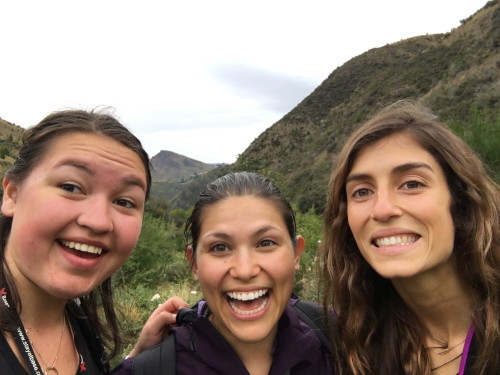
Julia, Claudia, and I, pumped on the mushroom fever :)
Here is a fun New Zealand species of Agaricus that I found hiking around the grasslands section of the trail.

New Zealand Agaricus
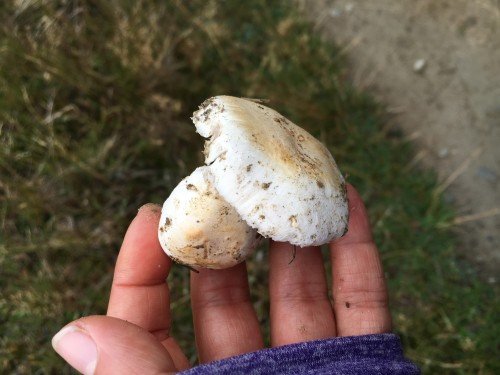
Hiking through the pine forest section, of course I found lots of Suillus because they are specialized to associate with trees only in the Pinaceae. Suillus are recognizable by their very slimy caps which is why they are commonly known as slippery jacks.
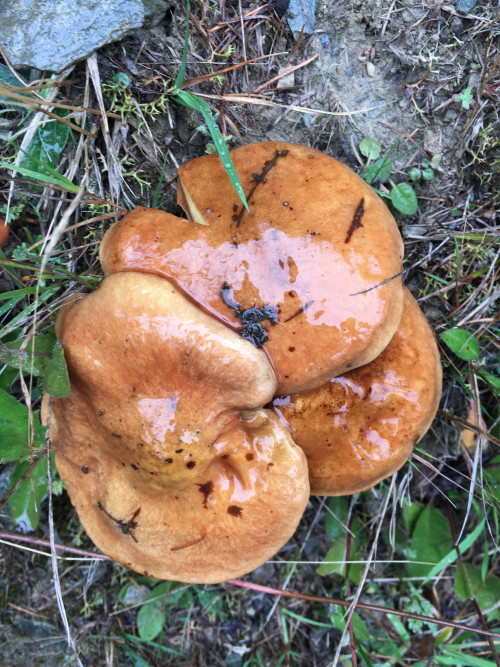
Slimy Suillus commonly known as slippery jacks
Suillus is a good genus to be able to recognize if you are lost in the woods because it is highly abundant (I literally saw thousands in New Zealand) and edible, although not particularly delicious. It has tubes instead of gills, often has an annulus (ring around the stem), always grows near pine trees, and often has a very slimy cap.
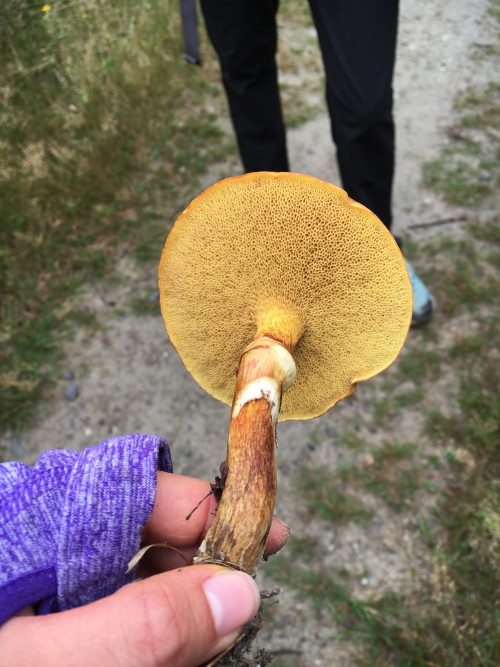
Underside of the Suillus
Mushroom identification requires you to utilize all of your senses. To that end, smells and tastes are very important forms of mushroom ID. I had all sorts of fun introducing my new friends to smelling and tasting different genera of mushrooms to learn their diagnostic features. For instance, Hebeloma is distinctive for its radish like smell.
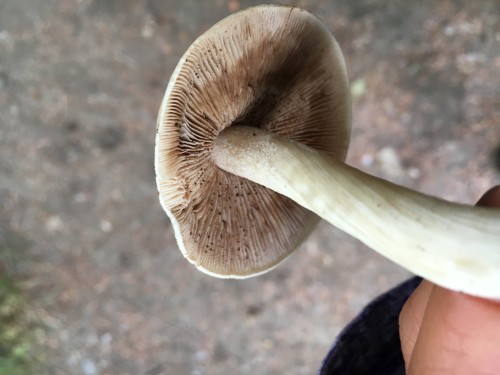
Hebeloma smells like radish
Inocybe on the other hand is described as smelling spermatic. Can you guess what that smells like?
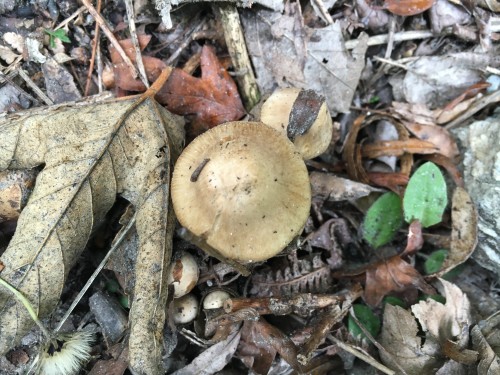
Inocybes
Another genus that was very common in the pine forests in New Zealand was Lactarius. Lactarius is known for it’s milky lactates that can often taste spicy or make your tongue burn. It’s ok to lick a small amount for identification purposes. I promise it won’t kill you :)
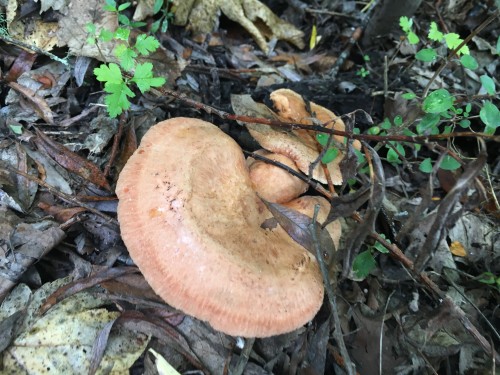 \
\
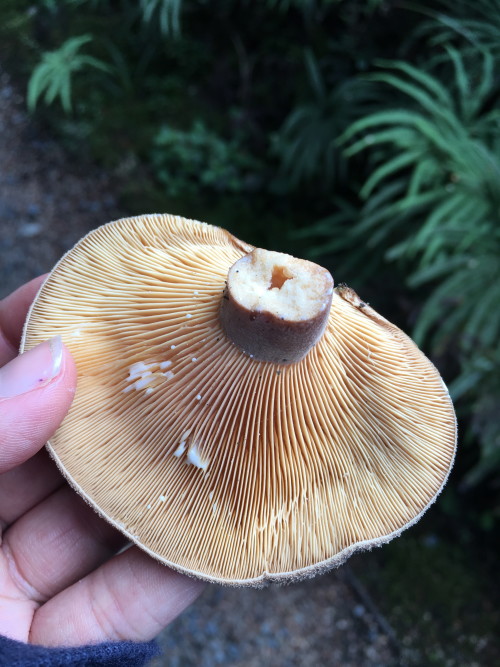
Lactarius lactates milky latex
A beautiful mushroom that I was very excited to see was the Hygrocybe singeri. In California these mushrooms are very common in redwood forests. They are so beautiful and colorful and slimy they are very fun to find in the woods. They are decomposer mushrooms that you can often find growing in leaf litter.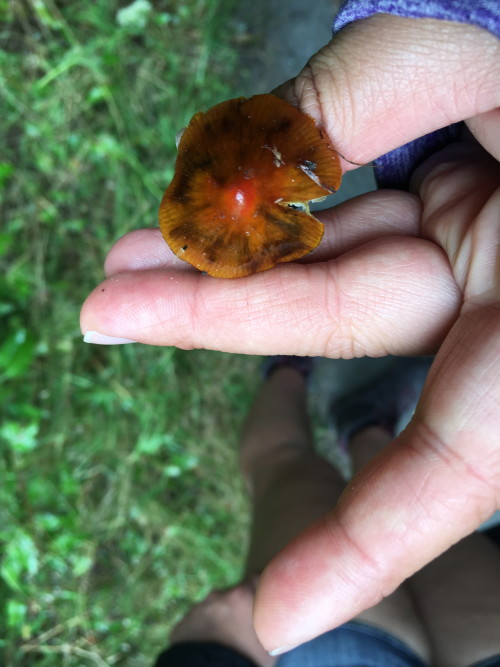
Hygrocybe singeri is recognizable because it stains black when you touch it.
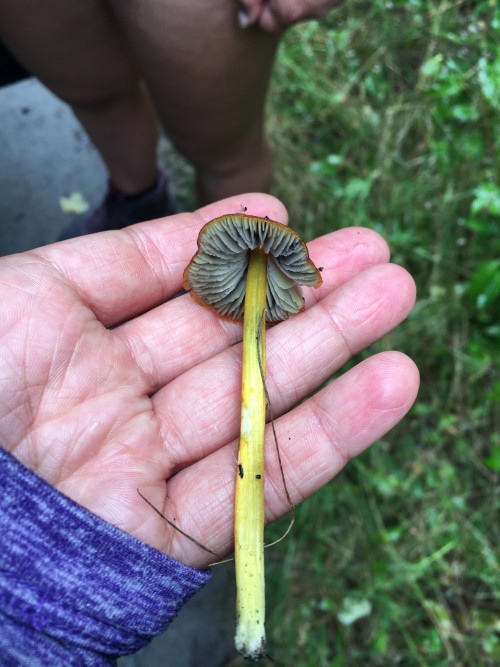
Hygrocybe singeri stains black when you touch it.
For me, by far the most exciting find of the day was the hundreds of very edible Coprinus comatus. This mushroom, also known as the shaggy mane, is part of a large group of mushrooms called the inky caps.

Tons of Coprinus comatus AKA the shaggy mane
Inky caps are called that way because their spores are very black and the caps slowly melt and eat themselves (called deliquescing) to disperse the spores.
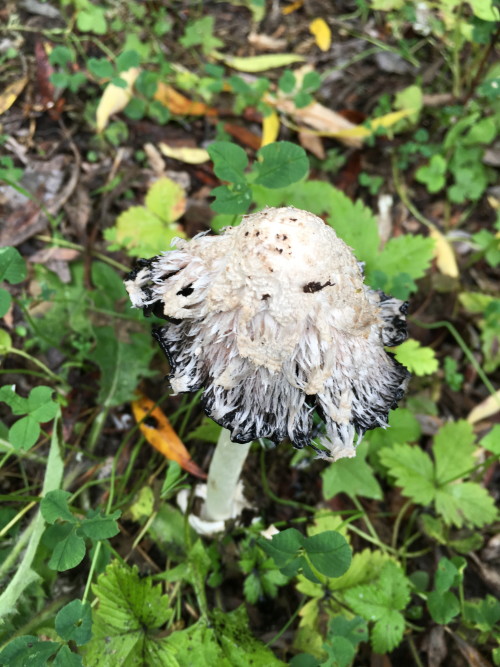
Inky cap deliquescing and releasing its black spores
You want to eat this mushroom when it is young and white, before it has started to deliquesce.
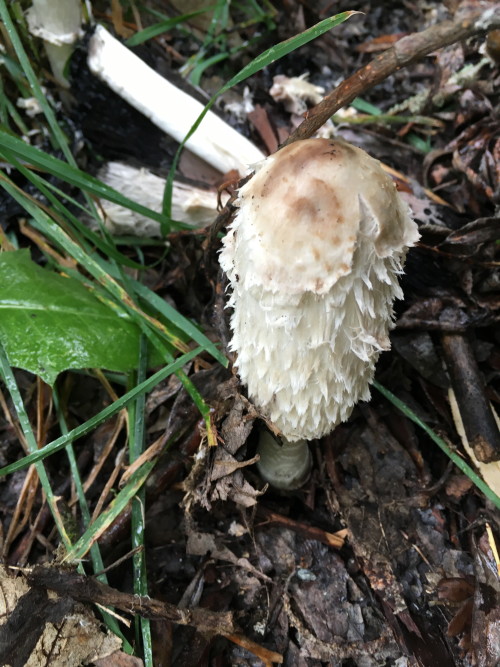
Young Coprinus comatus, in perfect condition for eating :)
Look how happy I am to be surrounded by tons of edible shaggy mane mushrooms :) Cheers NZ!
